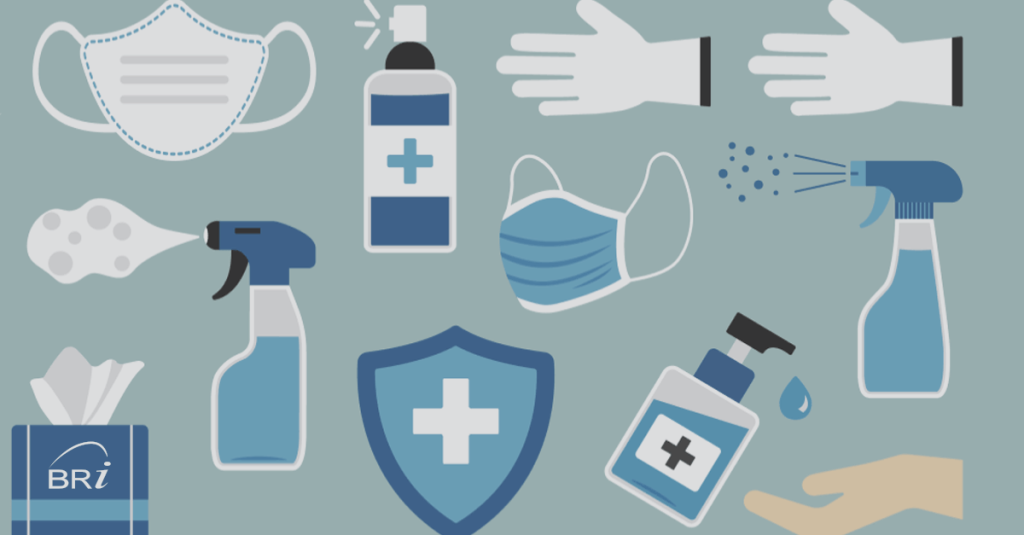NOTE: A previous version of this blog on personal protective equipment was originally published in October 2020. It has been updated to include a new legislative updates from March 2021 and more.
In March 2021, the IRS released Announcement 2021-7, establishing that “personal protective equipment such as masks, hand sanitizer, and sanitizing wipes, used for the primary purpose of preventing the spread of the Coronavirus Disease 2019 (COVID-19 PPE) are treated as amounts paid for medical care under § 213(d) of the Internal Revenue Code (Code).”
What you need to know:
- COVID-19 PPE items such as masks, hand sanitizer, and sanitizing wipes purchased on 1/1/2020 or later are eligible for reimbursement from Medical Flexible Spending Accounts and Health Savings Accounts. Reimbursement is permitted for Health Reimbursement Accounts that currently allow over-the-counter medical supplies as eligible expenses.
- Employees are be able to submit a claim online or through the BRiMobile app to have past expenses reimbursed.
- Within the next few months, merchants will begin to update their systems to identify these newly eligible items. Once that has occurred, employees can use their Beniversal® Prepaid Mastercard® to purchase these items directly.
Shop PPE from the FSA Store or find an eligible merchant in your area with our Store Locator. (Shipping and handling fees incurred to obtain eligible items are considered a qualifying expense and may be paid with funds from your pre-tax health account).
Since the beginning of the COVID-19 pandemic, adjustments have been made for which items can be purchased through a tax-deferred health account. These accounts include health savings accounts, flexible spending accounts and health reimbursement accounts (or arrangements).
How does something become eligible?
Good question.
Eligibility is a fickle business. An item (or service, procedure, etc.) has to meet several criteria in order to earn eligibility status.
- It must be used to diagnose, cure, treat, mitigate and/or prevent a disease, injury or symptom of a disease.
- It’s primary purpose must be for #1 (this is known as the “but for” clause. Generally speaking, it cannot be a dual purpose item).
In short, a dual propose item is something that can be used for medical or health purposes, but it’s primary use isn’t always for medical or health purposes. You can read more about dual purpose items here.
So why wasn’t PPE eligible originally?
The main reason masks and PPE items didn’t immediately receive eligibility status is the fact they are dual purpose. While their primary use is now recognized as disease prevention, they have historically not been used mainly for this purpose.
Some items are still considered dual purpose (rather than eligible 100% of the time) including:
- vitamins, minerals and supplements
- homeopathic remedies
- massage therapy
The silver lining? Often, dual purpose items can be recognized as eligible items if your medical provider completes a letter of medical necessity (sometimes referred to as a LMN or certificate of medical necessity).
The way forward
Even though masks are now eligible, you can still get creative and fashion your own. While we wish taping together 50 adhesive bandages in the shape of a square with ear loops counted, we don’t think that would meet the CDC’s guidelines for a safe mask. Same goes for wrapping an ace bandage around your head. While it might technically function as a mask (and a costume), it doesn’t quite fit the bill.
So what are some other ideas?
DIY masks
You might have seen recent DIY videos that show how to convert a sock into a mask. While we highly advise using new socks for this activity, if you have compressions socks that you don’t need anymore and that have recently undergone a thorough cleaning, you could definitely use those. Here’s a video on how to have a sock mask in no time.
Helpful tip: Make sure the sock is big enough to create a breathable covering over your nose and mouth.
Find more at-home mask ideas from the CDC.



